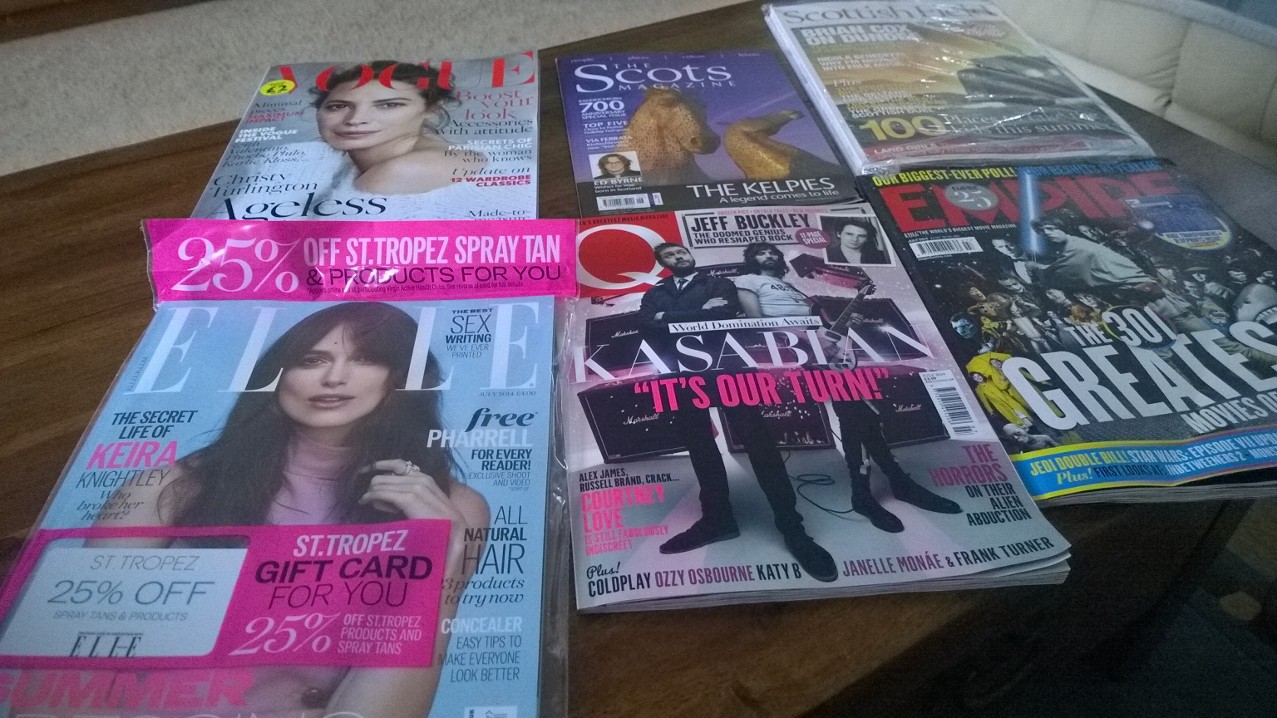Know your colours from works of art
Famous artists use colour to convey their message. Look at the combinations under each painting.

Cumnock Media Class
Know your colours from works of art
Famous artists use colour to convey their message. Look at the combinations under each painting.
BBC resource. Lots of good ideas from pre-production through to marketing and distribution.
When a media text is being planned, perhaps the most important question the producers consider is “Does it have an audience?” If the answer to this is ‘no’, then there is no point in going any further. If no one is going to watch/read/play/buy the text, the producers aren’t going to make any money or get their message across. Audience research is a major part of any media company’s work. They use questionnaires, focus groups, and comparisons to existing media texts, and spend a great deal of time and money finding out if there is anyone out there who might be interested in their idea.
It’s a serious business; media producers basically want to know the
of their potential audience, a method of categorising known as demographics. Once they know this they can begin to shape their text to appeal to a group with known reading/viewing/listening habits.
One common way of describing audiences is to use a letter code to show their income bracket:
| A | Top management, bankers, lawyers, doctors and other highly salaried professionals |
| B | Middle management, teachers, many ‘creatives’ eg graphic designers etc |
| C1 | Office supervisors, junior managers, nurses, specialist clerical staff etc |
| C2 | Skilled workers, tradespersons (white collar) |
| D | Semi-skilled and unskilled manual workers (blue collar) |
| E | Unemployed, students, pensioners, casual workers |
They also consider very carefully how that audience might react to, or engage with, their text. The following are all factors in analysing or predicting this reaction.
| AUDIENCE ENGAGEMENT | This describes how an audience interacts with a media text. Different people react in different ways to the same text. |
| AUDIENCE EXPECTATIONS | These are the advance ideas an audience may have about a text. This particularly applies to genre pieces. Don’t forget that producers often play with or deliberately shatter audience expectations. |
| AUDIENCE FOREKNOWLEDGE | This is the definite information (rather than the vague expectations) which an audience brings to a media product. |
| AUDIENCE IDENTIFICATION | This is the way in which audiences feel themselves connected to a particular media text, in that they feel it directly expresses their attitude or lifestyle. |
| AUDIENCE PLACEMENT | This is the range of strategies media producers use to directly target a particular audience and make them feel that the media text is specially ‘for them’. |
| AUDIENCE RESEARCH | Measuring an audience is very important to all media institutions. Research is done at all stages of production of a media text, and, once produced, audience will be continually monitored. |
Audience reaction to even early versions of a media text is closely watched. Hollywood studios routinely show a pre-release version of every movie they make to a test audience, and will often make changes to the movie that are requested by that audience. (Via mediaknowall.com)
Enter the Grid

Who are the target audiences for these products? How could you tell just from the front cover?
Analysis of technical codes for Derek The Cuckoo
As you watch the Irn Bru advert, note the following:
Frame 1
Setting: Interior library 4.10pm
Action: Student sits motionless at desk
Distance: Extreme long shot (ELS) student
Angle: Slight high angle
Movement: Track forward
Audio: Sound of ticking clock
Continuity: Ticking clock across first 3 shots
Frame 2
Action: Librarian stamps book beside photo of her giving a “shush” gesture
Distance: Medium close up (MCU) librarian with head obscured by framing
Angle: Slight high angle
Movement: Static
Audio: Ticking clock and sound of library book being stamped
Frame 3
Action: Bored student at desk gazes vacantly into empty space
Distance: Medium close up (MCU) student
Angle: Low angle
Movement: Static
Audio: Ticking clock
Frame 4
Action: Student sits motionless at desk
Distance: Extreme long shot (ELS) student
Angle: Slight high angle
Movement: Static
Audio: Creak … crash!
Continue this analysis yourself and for each frame you look at, state what meaning is conveyed to the viewer.
Glow Blogs uses cookies to enhance your experience on our service. By using this service or closing this message you consent to our use of those cookies. Please read our Cookie Policy.